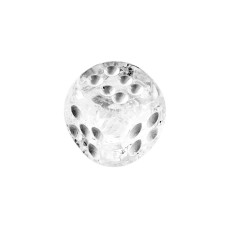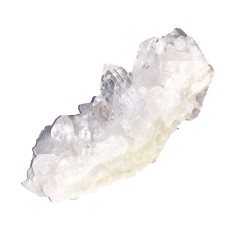Quartz
Quartz is a common and widely distributed mineral composed of silicon dioxide (SiO₂). It is notable for its hardness and resistance to chemical weathering, making it a prevalent and durable component of the Earth's crust. Here are some key characteristics and facts about quartz:
Physical Properties
- Crystal Structure: Quartz crystals belong to the hexagonal crystal system and typically form prismatic crystals with a six-sided pyramid at each end.
- Color: Quartz can be colorless, white, or come in various colors due to impurities, including:
- Amethyst: Purple
- Citrine: Yellow to orange
- Rose Quartz: Pink
- Smoky Quartz: Brown to black
- Luster: Vitreous (glassy)
- Hardness: Quartz has a hardness of 7 on the Mohs scale, making it quite durable.
- Density: Approximately 2.65 grams per cubic centimeter.
Chemical Properties
- Composition: Pure quartz is composed of silicon dioxide (SiO₂).
- Impurities: Trace elements and mineral inclusions can influence the color and other properties of quartz.
Varieties
Quartz exists in two main forms:
- Macrocrystalline Quartz: Large, visible crystals, such as rock crystal, amethyst, citrine, and rose quartz.
- Cryptocrystalline Quartz (Chalcedony): Composed of microscopic crystals, includes varieties like agate, jasper, onyx, and carnelian.
Formation and Occurrence
- Formation: Quartz forms from the cooling of molten rock (magma) or through hydrothermal processes (hot water solutions).
- Geological Settings: Commonly found in igneous, metamorphic, and sedimentary rocks. It's abundant in granite and sandstone and occurs as veins in many types of rocks.
Uses
Dice Rock crystal
Type of jewellery: Dice game Type of stone: Rock crystal Sold individually ..
£12.50
Quartz Cluster
Type: Raw Stone Type of Stone: Quartz Quartz Cluster Size: L. 13 cm x l. 13 cm x H. ..
£168.36
Showing 1 to 2 of 2 (1 Pages)


